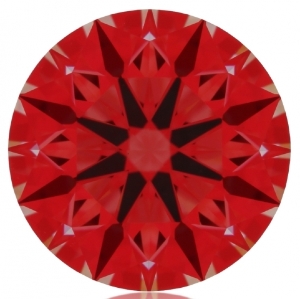I am hoping some of the experts here may be able to shed some light on what kind of visual differences you might expect to see in two very similar stones with very slight differences in their uppers. Here are the specs on them:
Stone 1-
1.79c - 7.76-7.79-4.82 mm
Table- 55.4%
Total depth- 61.9%
CA- 34.6 (15.4%)
PA- 40.7 (43%)
Star- 53%
LG halves- 79%
Stone 2-
1.813c - 7.78-7.82-4.83 mm
Table- 55.9%
Total depth- 61.9%
CA- 34.9 (15.4%)
PA- 40.7 (43%)
Star- 49%
LG halves- 79%
Assume both have very good optical symmetry, though the lower girdle halves prevent H&A designation due to clefts in the hearts.
Is there anything that can be concluded about possible visual difference going solely off the report numbers?
Is there more potential for fire in the stone with a slightly larger crown angle?
Is there a preference for either shorter stars and steeper crown or longer stars and shallower crown?
Is the probability very low that someone who is new to diamonds will even see a difference?
Stone 1-
1.79c - 7.76-7.79-4.82 mm
Table- 55.4%
Total depth- 61.9%
CA- 34.6 (15.4%)
PA- 40.7 (43%)
Star- 53%
LG halves- 79%
Stone 2-
1.813c - 7.78-7.82-4.83 mm
Table- 55.9%
Total depth- 61.9%
CA- 34.9 (15.4%)
PA- 40.7 (43%)
Star- 49%
LG halves- 79%
Assume both have very good optical symmetry, though the lower girdle halves prevent H&A designation due to clefts in the hearts.
Is there anything that can be concluded about possible visual difference going solely off the report numbers?
Is there more potential for fire in the stone with a slightly larger crown angle?
Is there a preference for either shorter stars and steeper crown or longer stars and shallower crown?
Is the probability very low that someone who is new to diamonds will even see a difference?








300x240.png)